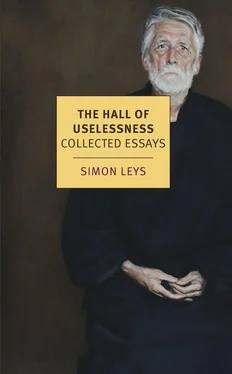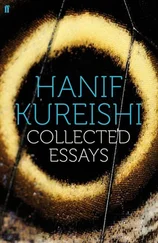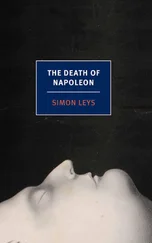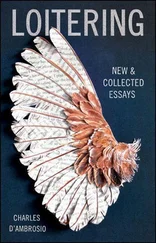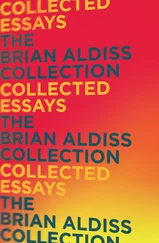7. The episode, which occurred in 818, involved Emperor Xianzong and the grandfather of the great art historian Zhang Yanyuan; the latter told it in his Lidai ming hua ji . See Zhang Yanyuan, Lidai ming hua ji (Peking: Renmin meishu chubanshe, 1963), Vol. 1, Chap. 2, pp. 10–11. See also W. Acker, Some T’ang and pre-T’ang texts on Chinese painting (Leiden: Brill, 1954), pp. 138–41.
8. It is at this time, for example, that The Night Revels of Han Xizai by Gu Hongzhong (tenth century) and Qingming Festival along the River by Zhang Zeduan (twelfth century) returned to China. (Both paintings are kept in the Ancient Palace Museum, Peking.)
9. The fact that an author describes in vivid terms the pictorial style of a given artist never implies that he actually saw any works by that artist; sometimes, in another passage of the same text, he may even explicitly acknowledge that he never had such an opportunity.
10. For example, Mi Fu (1051–1107), who was one of the most learned connoisseurs of his time, with privileged access to the best collections, confessed that, in his entire life, he only saw two authentic paintings by Li Cheng, the greatest and most influential landscape painter of the tenth century (Li Cheng died in 967, less than a century before Mi Fu’s birth). Mi Fu, Hua shi , in Meishu congkan (Taipei, 1956), Vol. 1, p. 88. See also N. Vandier-Nicolas, Le Houa-che de Mi Fou (Paris: Presses universitaires de France, 1964), pp. 32–33. Similar evidence can be found in abundance, it only remains to be systematically compiled.
11. Besides being an important business, art forgery also fulfilled very significant artistic and socio-cultural functions. Every scholarly family had to possess a collection of paintings and calligraphy; needless to say, not every scholarly family had the financial means to acquire ancient works of art, the supply of which was necessarily limited. Hence, forgers provided “imaginary” collections, which conformed to stylistic stereotypes and simultaneously popularised those stereotypes. In this respect, forgeries played a role not entirely dissimilar to the one which is taken now by cheap, popular prints and reproductions. This situation largely persists till today: I have seen eminent Chinese intellectuals living in narrow circumstances, who derived immense enjoyment and spiritual solace from an assortment of ludicrous fakes. (One is reminded of Balzac’s notorious collections of phony Titians and ridiculous Raphaels — these bizarre c roûtes acted as a powerful stimulant on his visionary imagination.)
Finally, it should also be observed that Chinese forgeries could achieve very high standards of aesthetic and technical quality. In every period, including our own time, some of the greatest artists had no qualms about indulging in this activity.
12. Jorge Luis Borges, “Funes the Memorious,” Labyrinths (Harmonds-worth: Penguin, 1981), pp. 87–95.
13. On this subject see also Wang Gungwu, “Loving the Ancient in China,” in I. McBryde, ed., Who Owns the Past? (Melbourne: Oxford University Press, 1985).
14. Xun Zi’s journey to the totalitarian state of Qin, as its power was on the rise, calls irresistibly to mind the political pilgrimages that Western intellectuals undertook in the 1930s to the Soviet Union of Stalin. Xun Zi’s account of his visit ( Xun Zi 16: “Qiang guo”) could in a way be summarised by Lincoln Steffens’s notorious utterance: “I have seen the future and it works.”
15. I am referring here to a famous passage of the Zuo zhuan (twenty-fourth year of Duke Xiang) which relates a dialogue that took place between Shusun Bao and Fan Xuanzi. Fan asked: “What is immortality? Could it be the continuous transmission of certain titles within a same family?” and he invoked the example of his own ancestors who had occupied high positions since the Xia dynasty. “No,” replied Shusun, “that is merely a case of hereditary privilege, which can be found everywhere and merely rests upon a continuity of the family clan. The true immortality consists in establishing virtue, in establishing deeds and in establishing words [that can continue to live in posterity], whereas the mere preservation of the greatest dignity cannot be called freedom from decay.” The philosophical interpretation which I present here comes from Qian Mu, Zhongguo lishi jingshen (Taipei: Guomin chubanshe, 1954), pp. 94–5.
16. The ancestors cult, which was the cornerstone of Chinese culture and society, should be studied in this connection.
17. On this subject, I am drawing heavily from L. Ledderose’s masterful study, Mi Fu and the Classical Tradition of Chinese Calligraphy (Princeton University Press, 1979).
18. It was suspected that the Orchid Pavilion was in the hands of a monk called Biancai, but the monk denied possessing it. Emperor Taizong then dispatched the censor Xiao Yi, disguised as an itinerant scholar, to visit Biancai. Xiao Yi gained the confidence of the monk and showed him various autographs of Wang Xizhi from the imperial collection, which he had brought along to be used as bait. Excited by this sight, Biancai told his visitor that he could show him even better stuff — and he picked from among the rafters of the roof where it was hidden the original scroll of the Orchid Pavilion . In front of this masterpiece, Xiao Yi pretended to be unmoved and even questioned its authenticity. Biancai, suffocating with indignation, stormed out of his hut. Xiao Yi grabbed the calligraphy, put on his court attire, and when Biancai returned, the visitor informed the monk that, from now on, the Orchid Pavilion would belong to the imperial collection. Struck with horror and grief, Biancai fainted. When he recovered, it was found that he could not swallow anymore — the emotional shock having resulted in a constriction of his gullet. Unable to absorb any solid food, he died a few months later. This arch-famous anecdote has provided the subject of many paintings.
19. L. Ledderose, op. cit. , p. 20.
20. This is the positive aspect of the phenomenon — but it also has a negative side. Modern Chinese intellectuals, progressives and revolutionaries have increasingly felt strangled by the seeming invincibility and deadly pervasiveness of tradition. The outstanding exponent of the struggle to get rid of the past was of course Lu Xun, who analysed with unique clear-sightedness the desperate nature of the modernisers’ predicament: they can never pin the enemy down, for the enemy is a formless, invisible ghost, an indestructible shadow.
21. Liu Shilong, “Wuyou yuan ji,” in Wan Ming bai jia xiao pin , pp. 104–7. This delightful (and very Borgesian!) little essay was brought to my attention some years ago in a seminar given at the Australian National University by Dr. Tu Lien-che.
22. Holmes Welch, “The Chinese Art of Make-Believe,” Encounter (May, 1968).
23. Rice University Studies 59.4 (1973).
ONE MORE ART: CHINESE CALLIGRAPHY
1. The view that human beings, as sexual creatures, are essentially incomplete belongs to Western culture; the Chinese view is that every individual contains in himself both yin and yang elements, and therefore should be able to achieve his own perfection in isolation.
2. Confessions , Vol. 1, 3: “When Ambrose was reading, his eyes ran over the page and his heart perceived the sense, but his voice and tongue were silent. He did not restrict access to anyone coming in, nor was it customary even for a visitor to be announced. Very often, when we were there, we saw him silently reading and never otherwise… We wondered if he read silently perhaps to protect himself in case he had a hearer interested and intent on the matter, to whom he might have to expound the text being read if it contained difficulties… If his time were used up in that way, he would get through fewer books than he wished. Besides, the need to preserve his voice, which used easily to become hoarse, could have been a very fair reason for silent reading. Whatever motive he had for his habit, this man had a good reason for what he did.” (I am quoting here the beautiful translation by Henry Chadwick, Oxford University Press, 1991.)
Читать дальше
